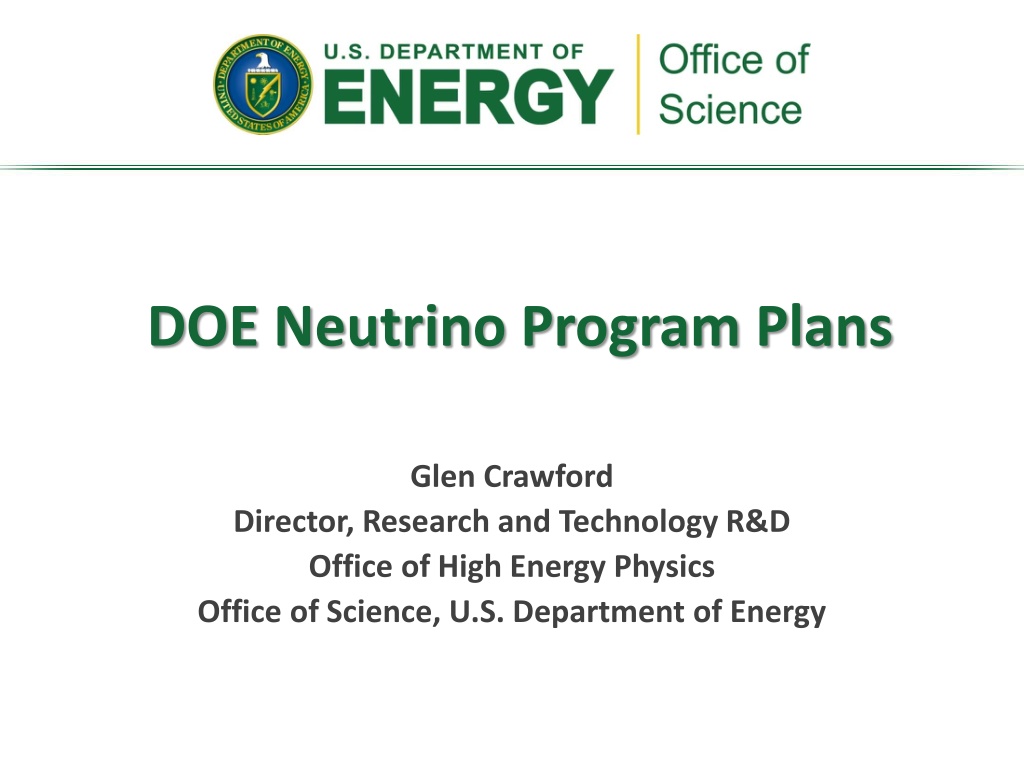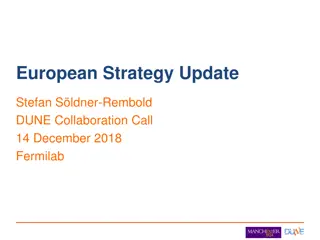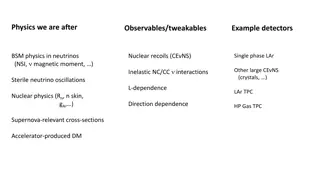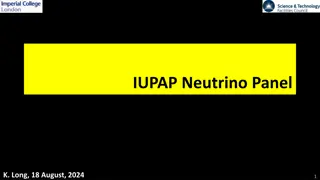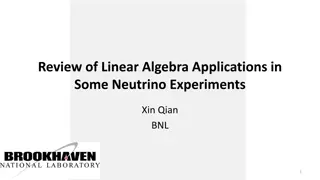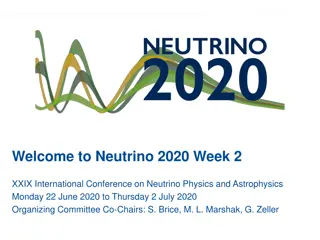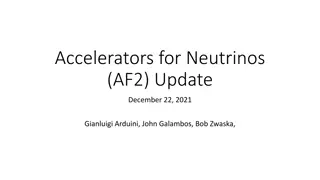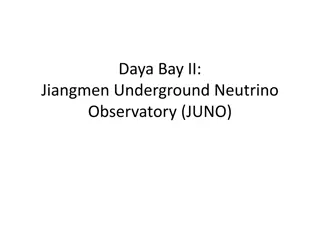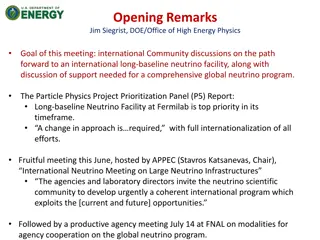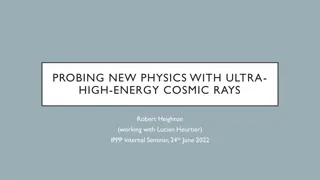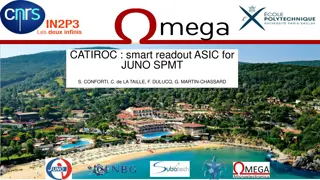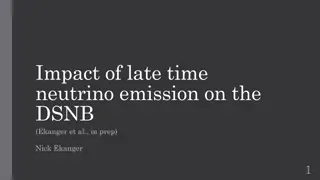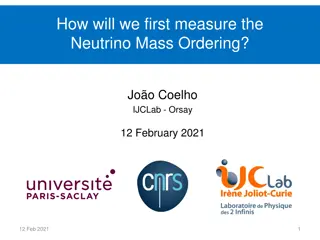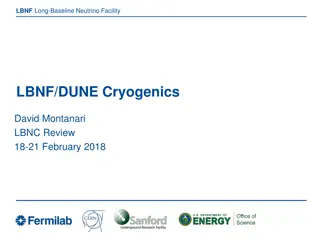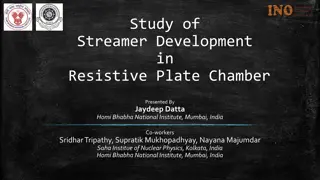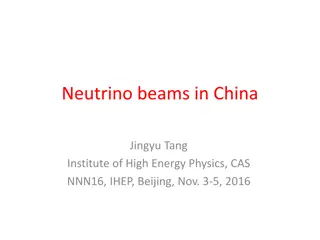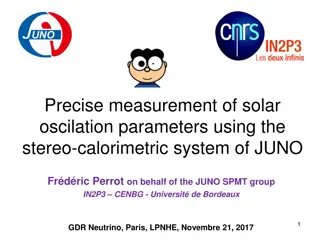Neutrino Program Plans and Recommendations by U.S. Department of Energy
The U.S. Department of Energy's Neutrino Program outlines significant changes and recommendations to pursue neutrino mass physics. These plans include international collaboration, short and long-baseline experiments at Fermilab, and the selection of small-scale experiments to address beyond the three-neutrino paradigm. The program aims to position the U.S. as a hub for neutrino research, with a focus on both short and long-term projects. Community workshops and calls for proposals are part of the initiative to advance neutrino studies.
Download Presentation

Please find below an Image/Link to download the presentation.
The content on the website is provided AS IS for your information and personal use only. It may not be sold, licensed, or shared on other websites without obtaining consent from the author. Download presentation by click this link. If you encounter any issues during the download, it is possible that the publisher has removed the file from their server.
E N D
Presentation Transcript
DOE Neutrino Program Plans Glen Crawford Director, Research and Technology R&D Office of High Energy Physics Office of Science, U.S. Department of Energy
P5 Neutrino Program Recommendations Pursue the physics associated with neutrino mass Several significant changes in direction are recommended: Reformulate the long-baseline neutrino program as an internationally designed, coordinated, and funded program with Fermilab as host. Redirect specific activities and efforts at Fermilab to the PIP-II program of improvements to the accelerator complex, which will provide proton beams with power greater than one megawatt by the time of first operation of the new long-baseline neutrino facility. Recommendation 12: In collaboration with international partners, develop a coherent short- and long-baseline neutrino program hosted at Fermilab. Fermilab has started this process, with our encouragement 2
P5 Short-Baseline Neutrino Recommendations Recommendation 15: Select and perform in the short term a set of small-scale short baseline experiments that can conclusively address experimental hints of physics beyond the three-neutrino paradigm. Some of these experiments should use liquid argon to advance the technology and build the international community for LBNF at Fermilab. A large fraction of the world s neutrino program will move to the U.S. The worldwide neutrino community will see the U.S. as the place to do their physics 3
DOE Process for Intermediate Neutrino Program P5 recommended both: LBNF as top midterm priority major project A balanced and coherent program of short baseline neutrino experiments including small projects Plans for LBNF are moving along well and are described in the Fermilab talk immediately preceding This talk will focus on the latter, near-term item above The FNAL short baseline program using the Booster Neutrino Beam is well advanced in planning stages and will be evaluated by the FNAL PAC in January However, there are many other possible short baseline neutrino experiments using other facilities, with and without accelerator beams Many R&D efforts underway at various stages of development DOE is interested in understanding these various options and plans in more detail Community workshop February 4-6, 2015 at Brookhaven Followed by a possible call for proposals 4
Workshop Info. Workshop on the Intermediate Neutrino Program February 4-6, 2015 Brookhaven National Laboratory www.bnl.gov/winp Agenda will include: Talks from agencies Lots of physics working groups on various neutrino topics Early registration deadline January 9 5
DOE Process for Short-baseline Neutrinos Planning for the workshop includes input from NSF and DOE NP as well including PIs supported by those programs See www.bnl.gov/winp for more info The workshop gives us the opportunity, in particular, to hear community ideas for other near term (less than 5 year) small projects (less than ~$10M) that are: Scientifically compelling Competitive in the world program Small enough in scope and technically ready Based on the information gleaned from the workshop and available funds we may announce a new funding opportunity (FOA) for such small projects later in 2015 Specific objectives and requirements would be called out in the FOA 6
Other Elements of DOE Neutrino program There will be many good ideas that do not fit into the funding or schedule constraints discussed above and we are interested in those, as well For example, there are also important issues to address in technology R&D for future experiments and theory support for the broad neutrino program Reports from the working groups will be helpful in addressing these issues Possible funding for such efforts will be dealt with through the usual proposal process. There may be additional opportunities for partnerships or other collaborative funding. 7
Measuring Neutrino Properties Neutrinos are neutral and only interact via the weak force Experiments need to generate a huge number of neutrinos Nuclear power plants produce antineutrinos in all directions Powerful accelerators can produce copious amounts of neutrinos and antineutrinos in a directed beam to a neutrino detector Experiments need very large and sensitive detectors Hundreds to thousands of tons of mass help allow a neutrino interaction High detector sensitivity helps record rare interactions, when they occur Neutrinos are known to change types as they travel and it is not clear if there is a difference in the way neutrinos and antineutrinos interact It takes some time (distance) for neutrinos to change types (oscillate) Optimal distance depends on the properties of the neutrino source Some measurements require hundreds of miles between source and detector Accelerators required to study difference between neutrino & antineutrino Understanding the complex physics of neutrinos requires a complementary set of experiments with different sources and detectors 9
